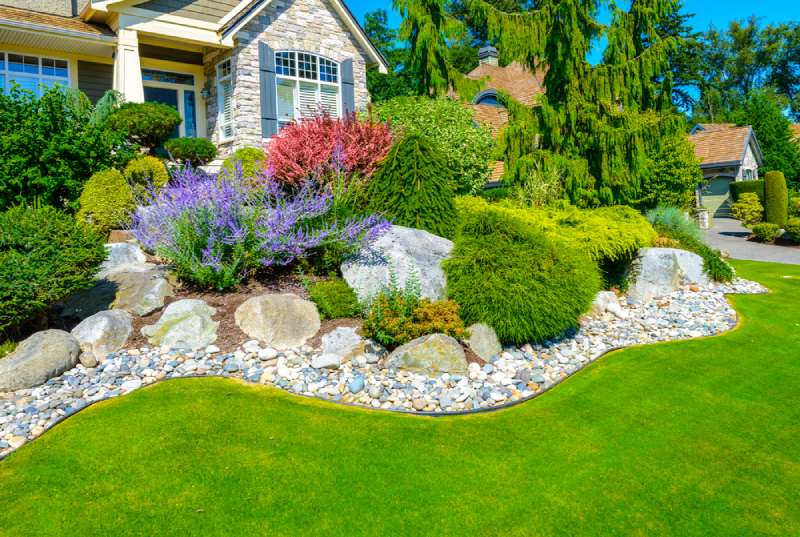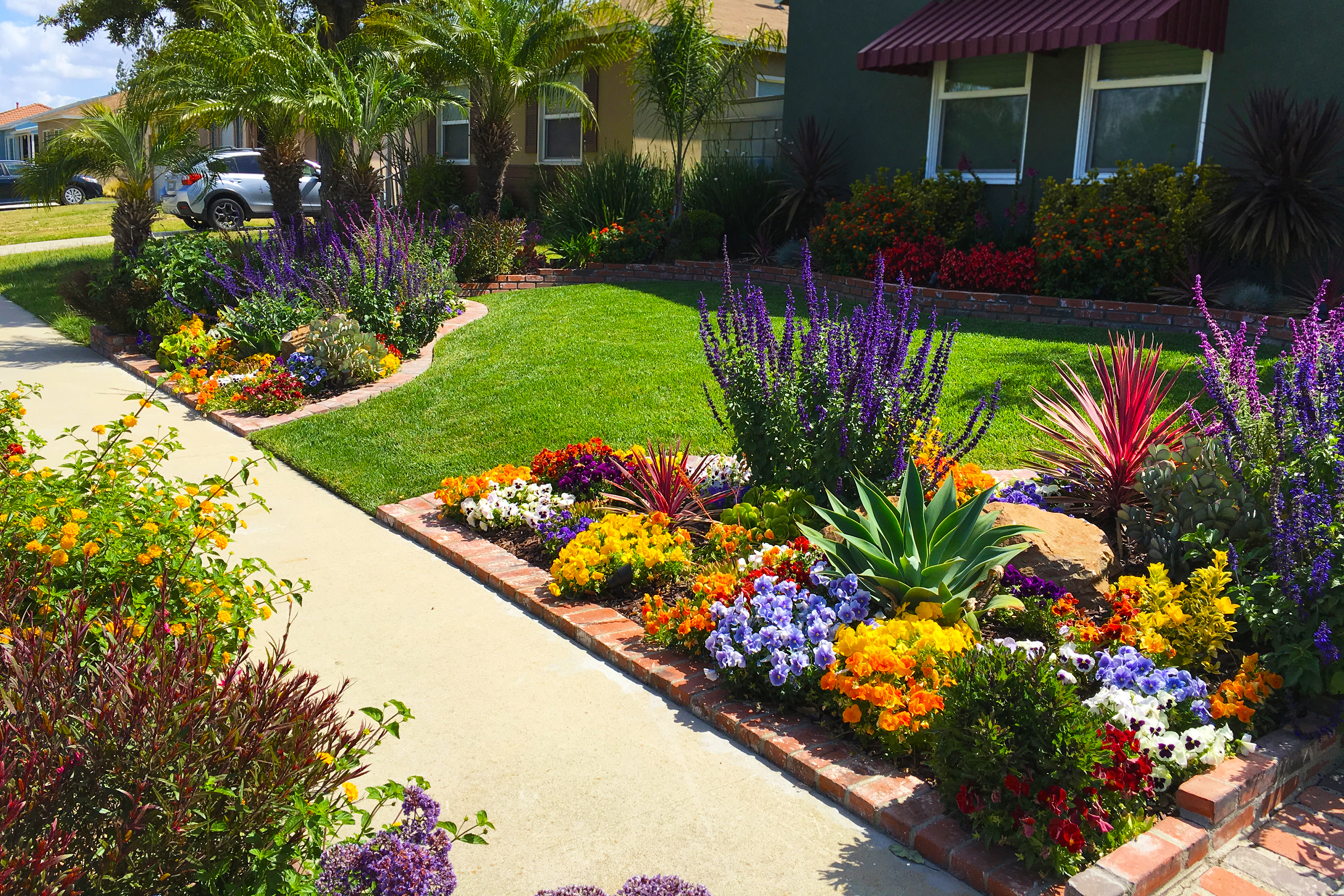A Comprehensive Guide to Creating and Implementing Effective Landscape Design Solutions
The art and science of landscape design extend past mere appearances; they include a thoughtful assimilation of style concepts, ecological stewardship, and useful implementation. What strategies can one use to make certain these landscapes not only prosper however likewise grow in consistency with their environments?

Understanding Landscape Design Principles
One could question what fundamental components contribute to reliable landscape style. At its core, effective landscape style rests on numerous essential principles that lead the plan and selection of aspects within a space. These concepts include unity, rhythm, balance, and percentage, each offering to produce an unified outside environment.
Unity describes the natural connection amongst numerous parts, making sure that they collaborate aesthetically and functionally. Equilibrium can be accomplished via asymmetrical or in proportion setups, allowing the landscape to really feel secure and inviting. Percentage entails understanding the range of elements in connection with each various other and the surrounding environment, promoting visual consistency and convenience.

Evaluating Your Outdoor Room
Before applying the concepts of landscape design, a thorough evaluation of your exterior room is essential. This preliminary examination aids define the scope of your landscaping job and makes certain that your design straightens with the unique attributes of your home. Begin by evaluating the measurements of your room, taking exact measurements to comprehend the readily available location for different components such as gardens, paths, and outdoor patios.
Next, observe the existing attributes of your landscape, consisting of topography, dirt quality, and drain patterns. These factors dramatically affect plant selection and positioning. Additionally, assess the sunshine exposure throughout various locations throughout the day, as this will certainly influence the kinds of plants that prosper in your yard.
Take into consideration the microclimates developed by structures, trees, and other obstacles, as they can affect temperature level and wetness levels. Take note of any kind of existing plants or hardscape aspects that you wish to retain or get rid of. This comprehensive analysis lays the foundation for a knowledgeable and effective landscaping remedy, making certain that your style is not only cosmetically pleasing however lasting and likewise functional for several years to come.
Lasting Landscaping Strategies
These techniques not just promote environmental equilibrium yet also enhance the useful and visual value of a landscape. Carrying out reliable irrigation systems, such as drip irrigation, reduces water waste and makes certain that plants obtain adequate dampness (Palm Desert Landscaping).

An additional effective method is the critical placement of trees and bushes to provide natural windbreaks and color, thus decreasing energy expenses (Palm Desert Landscaping). Rainfall yards can be integrated into the landscape layout to take care of stormwater runoff successfully, filtering system pollutants before they go into rivers
Picking the Right Plants
Picking the right plants for your landscape is essential to accomplishing both aesthetic allure and ecological consistency. The process starts with an understanding of your local climate, dirt problems, and the details microenvironments within your landscape. Assessing elements such as sunshine exposure, moisture degrees, and existing plants will help you pick plants that thrive in your distinct setting.
Think about including indigenous plants, as they are well-adapted to neighborhood problems, call for much less upkeep, and assistance regional wildlife. Furthermore, choosing a diverse variety of varieties can boost biodiversity while lowering the threat of condition and bug episodes. It is important to review the development behaviors, flowering periods, and seasonal colors of potential plants to create a vibrant and cohesive landscape.
Additionally, consider the planned use the area; for example, if the area will certainly experience high foot web traffic, select resilient ground covers. By attentively picking plants that straighten with both your environmental needs and visual goals, you can create a lasting landscape that not only enhances your home but likewise contributes favorably to the surrounding ecosystem.

Application and Upkeep Techniques
When the appropriate plants have been selected for your landscape, the emphasis changes to review effective application and recurring maintenance techniques. Successful installment starts with proper site prep work, that includes soil testing to identify nutrient degrees and pH, adhered to by amending the soil as required. Thoroughly set up plants according to their development behaviors and light requirements, guaranteeing appropriate spacing to advertise healthy and balanced development.
Watering is an important component of execution. Develop a watering schedule that considers the particular requirements of each plant types, readjusting for seasonal adjustments. Making use of drip watering systems can boost water efficiency and reduce runoff.
Maintenance strategies should be executed to make sure the durability and vitality of your landscape. Routine tasks include weeding, mulching, and pruning to regulate development and protect against condition. Fertilizing must be carried out based on soil examinations, giving the essential nutrients without over-fertilizing.
Monitoring for illness and insects is vital; early detection can prevent substantial damages. Seasonal changes to upkeep routines, such as preparing and winterizing perennials for spring growth, will certainly guarantee that your landscape stays healthy and balanced and visually enticing year-round.
Verdict
In verdict, effective landscaping remedies call for a comprehensive understanding of layout concepts, thorough evaluation of exterior areas, and the application of sustainable strategies. The choice of appropriate plant species plays a crucial duty in enhancing visual allure and environmental strength - Palm Desert Landscaping. Successful application and recurring maintenance even more make certain the longevity and vitality of landscapes. By incorporating these elements, landscapes can be transformed right into lovely, functional atmospheres that advertise biodiversity and add positively useful content to neighborhood health.
One may question what fundamental components add to effective landscape style. At its core, effective landscape layout pivots on numerous key principles that direct the plan and choice of aspects within an area.Choosing the right plants for your landscape is vital to attaining both aesthetic charm and environmental harmony. It is crucial to review the growth habits, blooming periods, and seasonal colors of possible plants to develop a natural and vibrant landscape.
Once the right plants have been picked for pop over to this web-site your landscape, the focus shifts to effective implementation and ongoing upkeep methods.